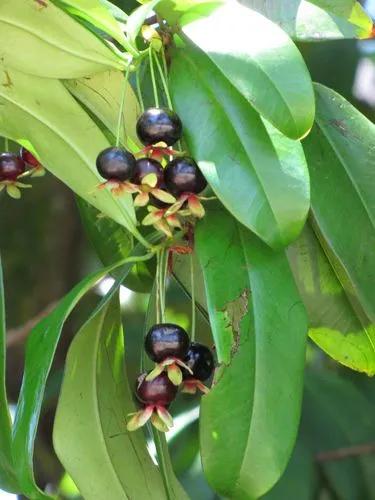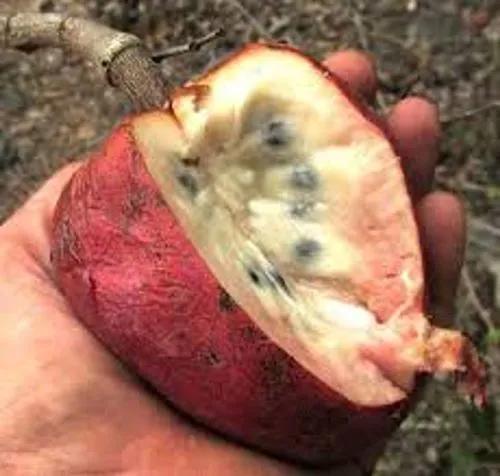Phyllanthus emblica, also known as emblic, emblic myrobalan, myrobalan, Indian gooseberry, Malacca tree, or amla from Sanskrit amalaki is a deciduous tree of the family Phyllanthaceae. It has edible fruit, referred to by the same name. The amla fruit is eaten raw or cooked into various dishes, such as dal (a lentil preparation) and amle ka murabbah, a sweet dish made by soaking the berries in sugar syrup until they are candied. It is traditionally consumed after meals.
In the Batak area of Sumatra, Indonesia, the inner bark is used to impart an astringent, bitter taste to the broth of a traditional fish soup known as holat.
The tree is small to medium in size, reaching 1–8 m (3 ft 3 in–26 ft 3 in) in height. The branchlets are not glabrous or finely pubescent, 10–20 cm (3.9–7.9 in) long, usually deciduous; the leaves are simple, subsessile and closely set along branchlets, light green, resembling pinnate leaves. The flowers are greenish-yellow. The fruit is nearly spherical, light greenish-yellow, quite smooth and hard on appearance, with six vertical stripes or furrows.
Ripening in autumn, the berries are harvested by hand after climbing to upper branches bearing the fruits. The taste of Indian emblic is sour, bitter and astringent, and it is quite fibrous.









